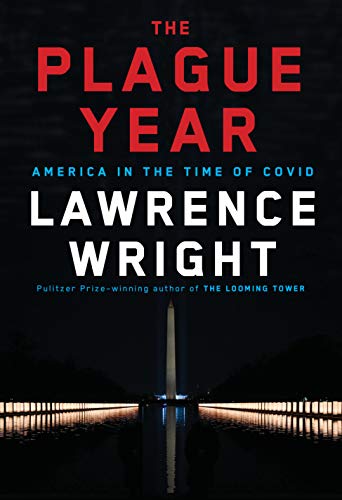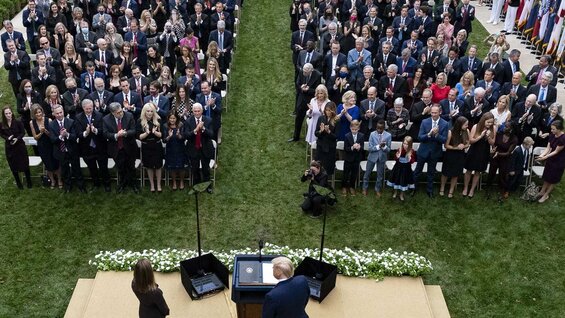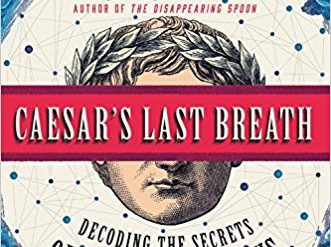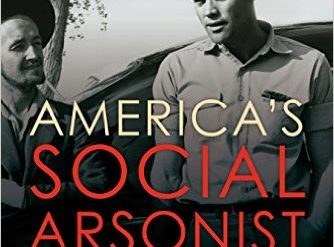
If it’s too early for a post-mortem on the COVID-19 pandemic, America’s publishers haven’t gotten the memo. Amazon lists 642 titles in response to the query “books about the COVID-19 pandemic.” The pandemic still rages on, filling hospitals in heavily impacted states and killing the unvaccinated in disturbing numbers. Not to mention the huge numbers of people falling ill and dying in other countries.
Still, at least two leading nonfiction authors have seen fit to render judgment on the American response to the disease. Michael Lewis’ The Premonition: A Pandemic Story artfully views the pandemic from within the public health community. And now Lawrence Wright examines the events of the past year and a half from a panoramic perspective in The Plague Year: America in the Time of COVID.
Premature or not, both books go a long way toward helping us understand what went so very wrong. They provide what is surely the most accurate perspective on the pandemic that’s within reach today.
The tragic absence of leadership
Is there a single, overarching reason for the debacle? Wright seems to suggest that it may be the abdication of leadership by the Trump Administration. “It was a national problem,” he writes, “but there would be no national plan. The pandemic was broken into fifty separate epidemics and dumped into the reluctant embrace of the surprised and unprepared governors.”
The Plague Year: America in the Time of COVID by Lawrence Wright (2021) 289 pages ★★★★★

Why have so many died in the USA?
Wright’s account casts light on several aspects of the COVID-19 pandemic that weren’t apparent at the time. Working with the limited hindsight of a single year—and with the pandemic still raging around the world—he identifies three significant missteps that account for the tragic and unnecessary number of deaths in the United States.
The Chinese coverup
The first of those missteps was China’s refusal to admit scientists from the CDC and WHO to interview Chinese doctors on the front line in Wuhan and study their findings. Wright characterizes it as an illustration of “the enduring legacy of Maoism.” Surely, this must be where any perspective on the pandemic must begin. Had the outside world gained entry to Wuhan, the world would have known weeks or months earlier that the SARS-CoV-2 virus is both highly contagious and transmissible through the air. Knowing these facts, the US public health community would have acted more decisively and much sooner.
However, some researchers have asserted that China’s guilt may lie even deeper. Wright includes a scary account of the science behind the claim that the virus accidentally escaped in 2019 from the Wuhan Institute of Virology. Scientists at the lab were studying coronaviruses and may have developed a potentially contagious variant in order to study how to counteract it. This claim is controversial. However, the circumstances Wright relates are suspicious. He notes that lethal viruses (including Ebola) have escaped from virtually every other highly secure biolab in the world, including those of the CDC and the US Army Medical Research Institute of Infectious Diseases.
The CDC “testing fiasco”
“The testing fiasco marked the second failed opportunity.” Wright’s characterization of the problem is right on target, because the CDC fumbled the task of developing a test for COVID in multiple ways. It refused to permit local health facilities throughout the country, many of them experienced in developing tests on their own, to do so. The CDC declined to adopt a proven test developed in Germany. Its own test proved to yield a huge number of false positives, and it took several crucial weeks to correct the problem. But it distributed its own, ultimately workable test, to only a handful of hospitals, without making arrangements for the test’s widespread manufacture. That caused additional weeks of delay.
The White House move against masks
The third of the “failed opportunities” Wright points to is the resistance to the use of masks. Wright lays much of the blame for the pandemic’s high death toll (as so many others have done) inside the White House. He relates in detail the raging debates within the menagerie of ideological zealots, misfits, and sycophants who dominated the Trump Administration. But there was little debate about using masks, since the President himself refused to wear one and insisted that those around him take them off. (“Immune to irony, he even toured a mask-making factory in Arizona without a mask.”) However, the White House isn’t the sole culprit.
“Masks have been a part of public health for over a century,” Wright observes, “but until April [2020], the WHO and other health agencies actively discouraged their use among healthy people, speculating that masks might cause people to take risks, and if worn incorrectly could put them at greater risk.” But the doctors changed course in the spring, and only the President and his staff, supported by Right-Wing media and Republican officials throughout the country, continued to argue against using masks.
Collectively, these three factors dictated that huge numbers of Americans would die. Now, of course, there is a fourth factor that prevents public health officials from containing the pandemic: the anti-vaccine movement promoted by the Republican Party. As I write, we are already seeing elevated levels of hospitalization and death as a result. And hospital systems in Red States such as Florida are reeling as a result of the Delta variant of the virus.
If it’s premature to gain perspective on the pandemic in mid-2021, Lawrence Wright’s portrayal must rank with the best that can be obtained today.
About the author

Lawrence Wright (1947-) has been on the staff of the New Yorker since 1992. His contributions have included some of the magazine’s most widely cited articles, and he has won numerous awards for his writing. The Plague Year is his eleventh nonfiction book. He has also written two novels and at least one play, which premiered at the Arena Stage in Washington, DC. Wright is best known for his study of Al-Qaeda, The Looming Tower, and for his exposé of Scientology, Going Clear. He lives in Austin, Texas.
For more reading
I’ve reviewed one other nonfiction book and one novel by Lawrence Wright:
- Going Clear: Scientology, Hollywood, and the Prison of Belief (Scientology revealed in a definitive investigative report)
- The End of October (An all-too timely thriller about a pandemic)
For other books on this topic, see Books about epidemic disease and the COVID-19 pandemic.
You might also be interested in:
- Top 10 nonfiction books about politics
- Science explained in 10 excellent popular books
- The top 5 books about Donald Trump and his impact on American democracy
And you can always find my most popular reviews, and the most recent ones, plus a guide to this whole site, on the Home Page.

























